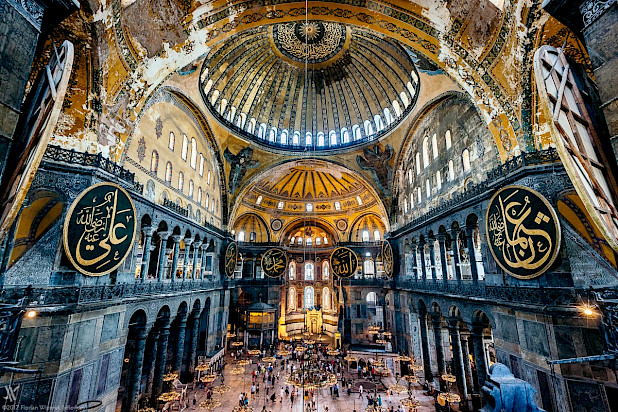Hagia Sophia Istanbul | Old City Istanbul
Hagia Sophia was included in the UNESCO World Heritage List in 1985. This building is one of the oldest holy places in the world, and has now become a mosque of the common culture of mankind.
Hagia Sophia is one of the historic districts of Istanbul, built between 532 and 537 AD. It is an extraordinary achievement in the history of architecture, a living proof of human resistance to the laws of physics, and a monument whose importance transcends national boundaries. As one of Istanbul’s World Heritage Sites, Hagia Sophia continues to attract millions of people with its majesty and beauty. The appearance of Hagia Sophia is so magnificent that people at the time believed that the church could not be built by hand, but with spiritual support. This quaint building occupies the Istanbul skyline and has been expanded and restored many times over the centuries. From the first day of construction, Hagia Sophia has always been a unique architectural work. It is famous for its magnificent religious buildings and its superb Byzantine mosaics and unique exquisite examples of Ottoman calligraphy.

Church: The Church of the Holy Spirit, Hagia Sophia, built by the Byzantine emperor Justinian I in the 6th century, includes pagan pillars from the temples of Ephesus and Artemis and precious mosaics from Christianity and Islam. This great temple is dedicated to the Holy Spirit (Sophia) in the doctrine of the Christian Trinity. Hagia Sophia is also one of the largest cathedrals in the world and has special significance for the Orthodox community.
Mosque: After the Ottoman Empire conquered Istanbul in 1453, the church was converted into a mosque. The Ottoman Empire supported this building with architectural elements showing Ottoman characteristics. Mosque elements such as mimbar, mihrab, missionary platform and wooden railings were added inside. Mahmut I built a library here. The southern courtyard contains the tombs of Murat III, Mohammed III and Selim II. The original baptistery was converted into the tombs of Mustafa I and Sultan Ibrahim.



